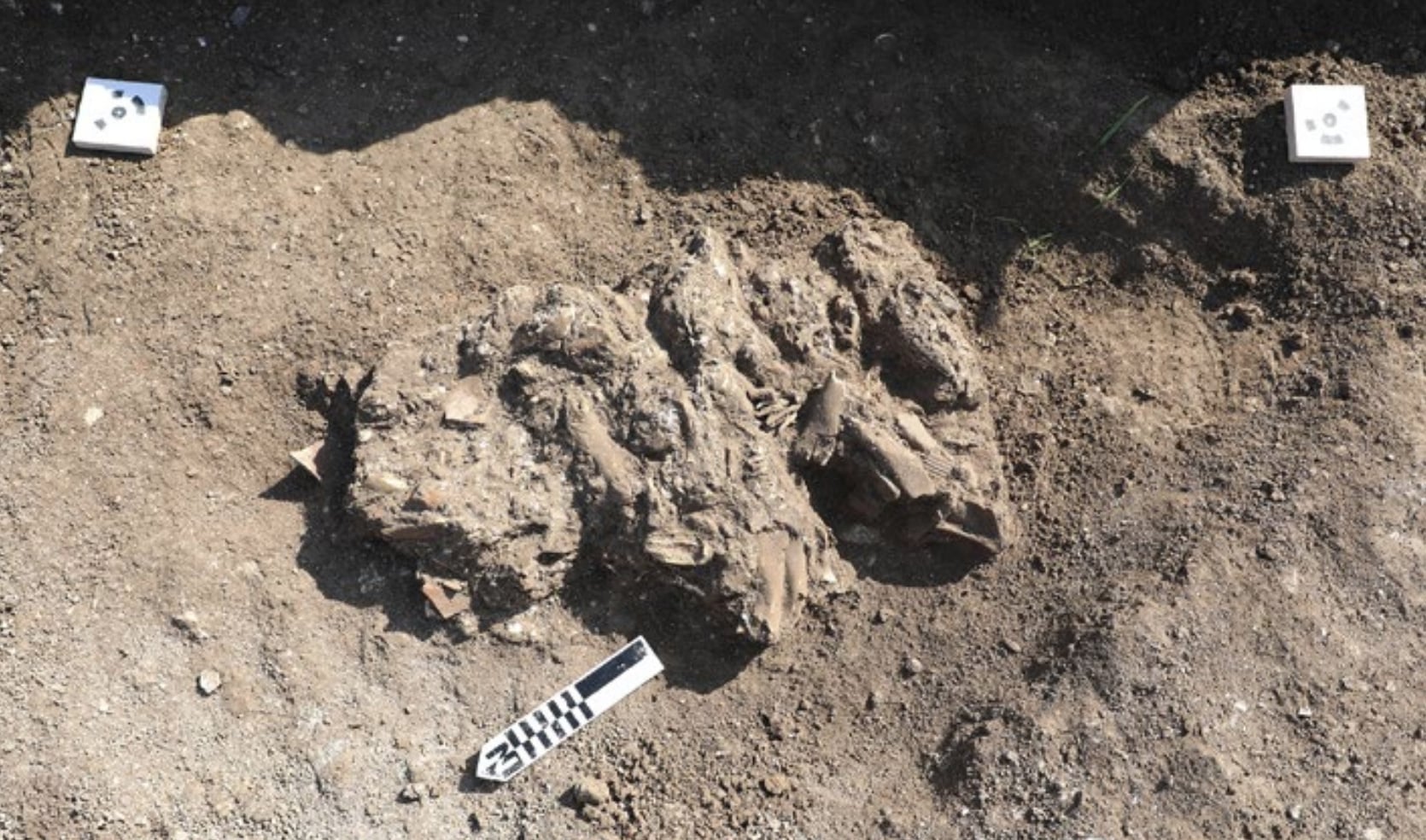

Archaeologists have uncovered evidence of a Roman funerary pig ritual at a military camp near the base of Tel Megiddo in northern Israel, once home to more than 5,000 Roman soldiers.
Known as Legio, the site served as a permanent base for nearly 180 years, from around 117 to 300 CE. The discovery sheds light on burial customs practiced by Roman legions stationed far from the empire’s center.
In a study published in the journal Atiqot, researchers detailed the findings, marking the first physical evidence of this little-known ritual, previously mentioned only in ancient texts. The discovery offers a rare glimpse into how Roman soldiers honored their dead through symbolic animal sacrifice and structured ceremonial acts.
Excavators uncovered a shallow pit within the camp that contained parts of at least 13 domestic pigs. The remains were limited to jaws, upper jawbones, and teeth—no full skeletons were found. Researchers noted that the bones had been intentionally placed in the ground.
Analysis ruled out the possibility that the remains were food waste. The bones showed no signs of cooking, gnaw marks from animals, or damage from rodents. The surrounding sediment indicated that the bones were buried during a single, organized event rather than gradually discarded over time.

The findings also showed a striking pattern: lower jaws outnumbered upper jawbones by a ratio of three to one. The pigs ranged in age from six to eighteen months—an age considered ideal for consumption, suggesting deliberate selection.
Some bones bore cut marks, indicating the pigs had been slaughtered and stripped of flesh before burial.
Pigs held significant value for Roman soldiers. Beyond serving as a major food source, they symbolized strength and masculinity. The wild boar, for example, was the emblem of Legio X, another renowned Roman legion.
The presence of pig jaws in ritual contexts is not entirely new. Similar findings have been reported at Roman sites in Jerusalem. However, this is the first time such remains have been found in a military cemetery, pointing to a shared, possibly standardized practice.
Ancient authors such as Varro and Pliny the Elder described purification rituals involving pigs. In Roman military tradition, soldiers sealed their oath of loyalty—the sacramentum militare—by sacrificing a pig. The animal was also part of ritual offerings to the god Mars, alongside a ram and a bull.
However, researchers believe the burial at Legio represents a different kind of ceremony. They link it to funerary rites such as the silicernium and cena novendialis—ritual meals held near graves to honor the dead and purify the burial space. These ceremonies often required the sacrifice of pigs to complete the burial process.
The study explains that the Roman soldiers likely cremated their dead and then purified the site through a pig sacrifice, followed by a shared ritual meal. The Legio site may be the first archaeological evidence of this funerary custom in the eastern Roman provinces.
